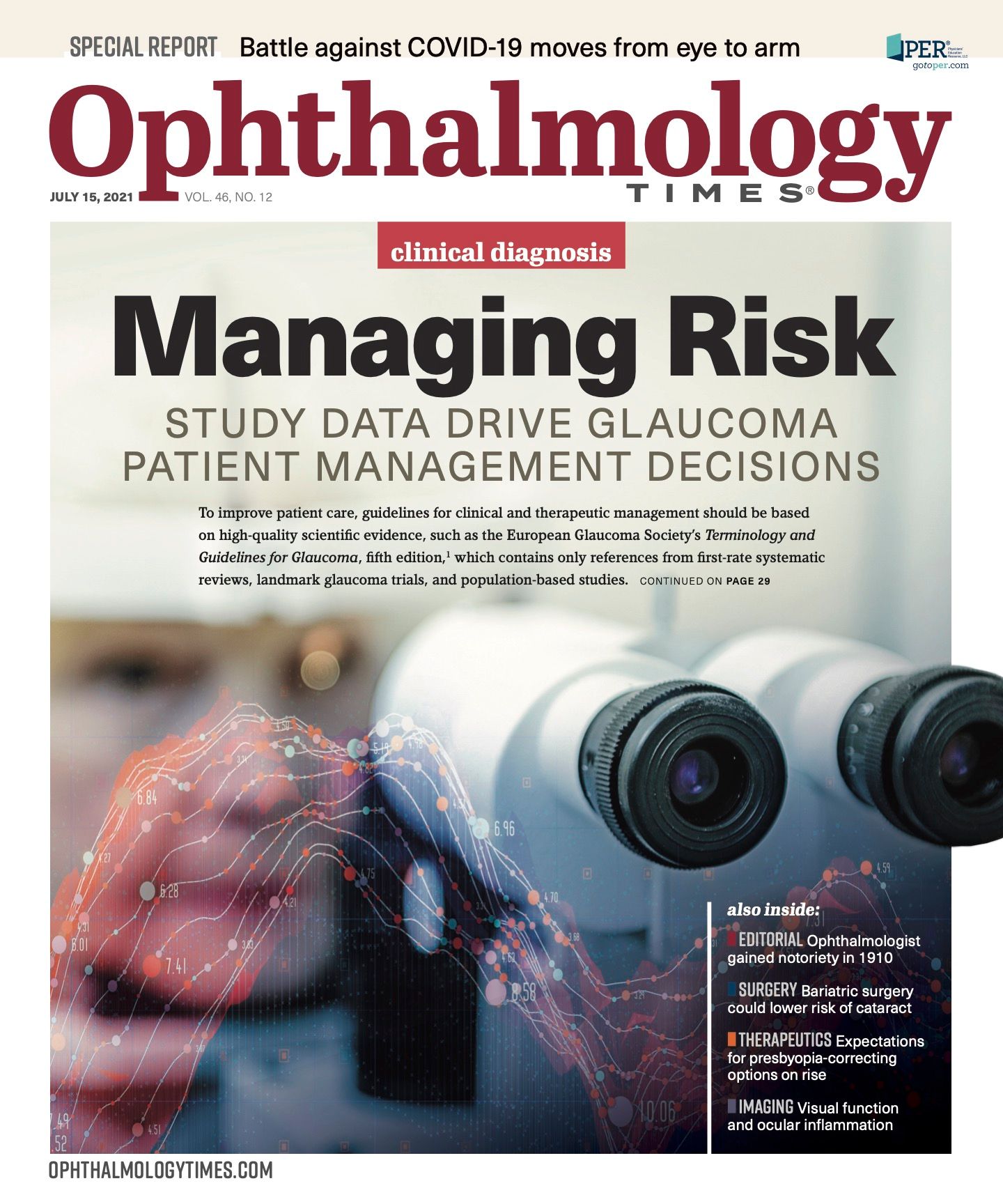Publication
Article
Digital Edition
Physicians measure contrast sensitivity in patients with cataract
Author(s):
Advances help gain clearer image, enhancing decision-making process.

Reviewed by Augustine Bannerman and Filippos Vingopoulos, MD
A quick test with active learning algorithms may give physicians a novel way to measure contrast sensitivity (CS) when evaluating patients before cataract surgery, according to Augustine Bannerman, an undergraduate research assistant, and Filippos Vingopoulos, MD, both from the Harvard Retinal Imaging Laboratory at Massachusetts Eye and Ear in Boston.
“Contrast sensitivity function [CSF] testing may be a valuable addition to the standard cataract evaluation to enhance surgical decision-making, particularly in patients with subjective visual complaints despite good visual acuity [VA],” Bannerman said.
According to Bannerman, surgical decision-making in the lead-up to cataract surgery is based on subjective visual impairment and not on objective clinically measured visual function outcomes.
Related: Timing and earlier neurolept anesthesia for laser-assisted cataract surgery
In light of this, Bannerman and his colleagues embraced past research on the strong correlation between CS and subjective visual impairment and vision-related daily activities, then went a step further to bypass the current imperfections that limit the CS testing used clinically.
Study design/findings
Investigators included 167 eyes, of which 58 eyes were cataractous, 77 were controls, and 32 were pseudophakic, in a study to characterize CSF in patients with cataract and those that were pseudophakic using a novel CSF test with active learning algorithms.
Participants’ vision was assessed using the Manifold Contrast Vision Meter (Adaptive Sensory Technology).
Visually relevant cataract was defined as 2+ nuclear sclerosis and a VA of more than 20/50, pseudophakic patients had posterior segment intraocular lenses, and controls had no more than 1+ nuclear sclerosis and no visual complaints.
The primary outcomes were the area under the log CSF (AULCSF), contrast acuity (CA), and CS thresholds at 1, 1.5, 3, 6, 12, and 18 cycles/degree (cpd).
Related: PODCAST: What patients need to know about cataract surgery
The so-called quick CSF test uses "a Bayesian active learning algorithm that maximizes information extraction over a very large set of possible combinations of contrast and spatial frequency that ultimately creates a curve separating visible from invisible stimuli with great test-related repeatability and testing times of 2 to 5 minutes per eye,” Bannerman said.
The investigators reported that the presence of cataract was associated with significantly decreased AULCSF (P = .04) and contrast threshold at 6 cpd (P = .01) compared with controls.
An interesting finding, according to Bannerman, was that even in a subgroup of cataractous eyes with very good VA (≥ 20/25), the contrast threshold at 6 cpd was still decreased significantly (P = .02).
The 6-cpd spatial frequency seems important, he said: The lower or higher spatial frequencies were not affected by cataract.
These contrast sensitivity deficits detected with the quick CSF test would have been missed with the traditional Pelli-Robson contrast testing, he added.
Related: Cataract surgeons on OR waste: Less is often more
Pseudophakic eyes did not have significantly different contrast outcomes measures compared with the controls.
The quick CSF test detected disproportionate significant contrast deficits at 6 cpd in the various metrics evaluated in cataractous eyes and even in those with good VA, the authors noted.
“CSF testing may be a valuable addition to standard cataract evaluation to enhance surgical decision-making especially in patients with subjective visual complaints despite good VA,” they said.
A potential area of study might be to perform the quick CSF test in pseudophakic eyes with different types of intraocular lenses, the authors said.
An ongoing study will demonstrate the improved CSF after cataract surgery and compare that with improvement in VA.
---
Augustine Bannerman
E: Augustine_bannerman@meei.harvard.edu
This article is adapted from Bannerman’s presentation at the Association for Research in Vision and Ophthalmology 2021 virtual annual meeting. Bannerman has no financial interest in this subject matter.

Newsletter
Don’t miss out—get Ophthalmology Times updates on the latest clinical advancements and expert interviews, straight to your inbox.




